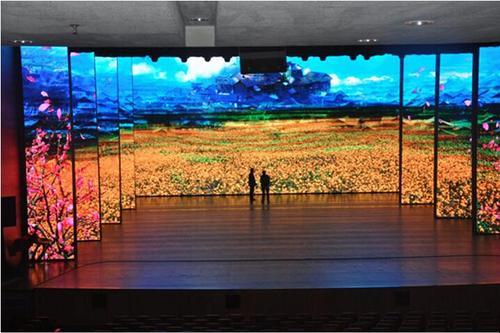Examining the Wide-ranging Connectivity Solutions Offered for LED Display Panels
Examining the Wide-ranging Connectivity Solutions Offered for LED Display Panels
Blog Article
LED wall units have secured traction for their capacity to deliver high-quality visuals in various settings, from professional environments to entertainment venues. One of the primary aspects of these systems is their interface options, which allow users to connect them to multiple devices and systems. Comprehending the broad input options supported for Light Emitting Diode wall panels is essential for enhancing their use and effectiveness. This discussion details these features, highlighting how they can cater to various needs and preferences.
One common interface method for Light Emitting Diode wall panels is HDMI. HDMI is broadly known for transmitting high-quality video and audio streams between devices. This connection type is particularly beneficial in business settings, such as meeting spaces or classrooms, where visual content or video content are often displayed. By using HDMI cables, users can seamlessly connect laptops, projectors, and streaming devices to LED wall panels, guaranteeing a clear and vibrant presentation of media.
Another popular connectivity method is Display Port, which is similar to HDMI but offers enhanced benefits. Display Port can support higher refresh rates and resolutions, making it an ideal choice for interactive media or graphic-intensive applications. For those deploying Light Emitting Diode wall panels in environments where performance is critical, such as competitive gaming venues or creative workspaces, DisplayPort can provide the necessary visual quality. Moreover, many contemporary computers and graphics cards include DisplayPort connections, making it a convenient option for technology-oriented professionals.
In addition to High-Definition Multimedia Interface and DisplayPort, wireless transmission methods are becoming progressively prevalent in Light Emitting Diode wall panel solutions. Wireless connections allow operators to share content without the requirement for physical cables, enabling a cleaner and more flexible setup. Technologies such as wireless internet and short-range communication allow users to connect smartphones, tablets, and laptops directly to LED wall panels without cumbersome wires. This versatility is particularly advantageous in fast-paced settings like trade shows or events, where quick adjustments to displays are often required.
For extensive deployments or more complex configurations, LAN integration through Ethernet is another viable option. Wired connections provide a consistent and reliable way to connect multiple LED wall panels within a system. This approach is suitable for digital signage applications found in shopping malls or airports, where multiple panels may need to present coordinated content across a broad area. By using network cabling and network switches, users can ensure that all connected panels receive uniform data and content efficiently.
Finally, it's crucial to consider the read here evolution of interface technology with technologies such as USB-C and Thunderbolt 3. These next-generation interfaces offer enhanced data transfer rates and flexibility by allowing one connector to handle both energy transfer and data exchange. As more devices incorporate these standards, LED wall panels equipped with USB-C ports will likely become more common. This evolution in connectivity not only enhances the functionality of LED wall panels but also aligns with the growing why not try this out trend of minimalism in technology setups by reducing the number of cables needed.
In conclusion, exploring the diverse connectivity methods accessible for Light Emitting Diode wall panels uncovers many opportunities for users across various fields. From traditional methods like HDMI and DisplayPort to modern wireless solutions and network connections, each option serves unique purposes tailored to distinct needs. Additionally, emerging technologies like USB-C promise further advancements in how users interact with LED wall panels. By understanding these integration alternatives, individuals can make informed selections that optimize their overall experience with these versatile display tools.